Sponsored Content by NuAireMar 20 2018
To reduce air turbulence and prevent splatter or unnecessary spread of aerosols, a proper technique should be used when working within a Class II Biological Safety Cabinet (BSC).
1. Know the airflow
BSCs offer protection to product, personnel, and environment via the use of HEPA-filtered air. In order to maintain a safe work environment, it is important to understand the air flow in, out, and through the cabinet.
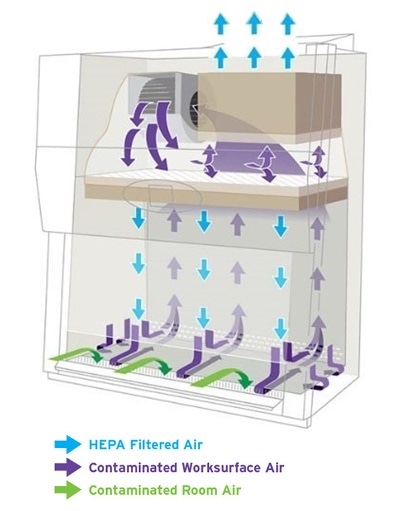
Image credit: NuAire
2. Work at the proper sash level
When the glass viewing sash is open to the certified height, optimum air inflow velocity (personnel protection) is obtained.
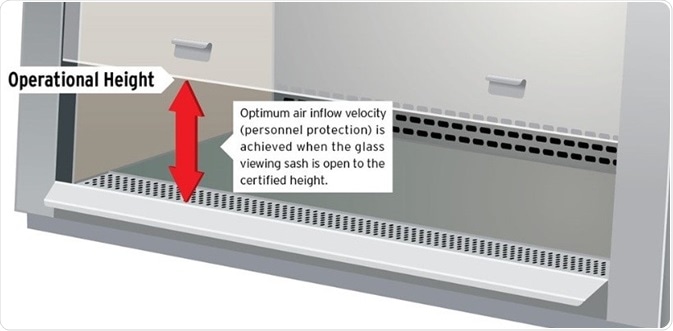
Image credit: NuAire
3. Never cover the air grill
If the air grill at the front of the cabinet is covered, it will affect the airflow integrity and may allow the laboratory air to infiltrate the work zone, or even cause the work zone air to enter the laboratory space.
Arms tend to block the grill but this can be prevented with a properly designed recessed airflow grill and/or a NuAire elbow rest.
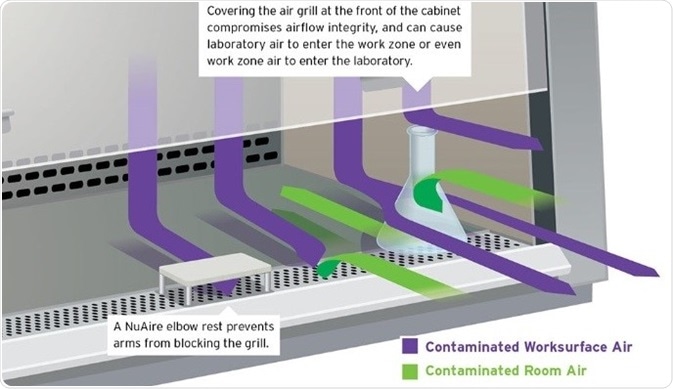
Image credit: NuAire
4. Minimize rapid movement
When arms are rapidly moved in a sweeping motion in and out of a BSC, this can disturb the air barrier and thus affect the containment. This risk can be reduced by slowly moving the arms in and out, perpendicular to the cabinet’s access opening. The air barrier may also be disrupted by other activities in the laboratory (for example, rapid movement, closing or opening doors, etc.).
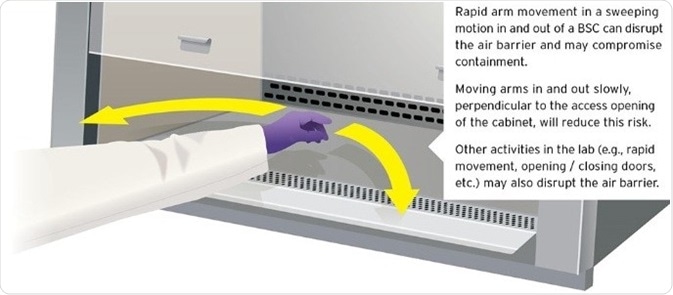
Image credit: NuAire
5. Reduce splatter
Many standard procedures performed in BSCs may produce splatter or aerosols. Methods to reduce the generation of splatter and aerosols will reduce the possibility for personnel exposure to infectious materials.
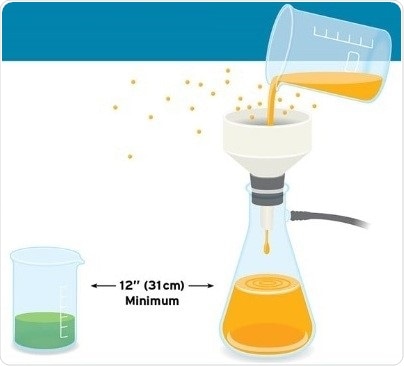
Image credit: NuAire
Class II cabinets have been specifically designed so that laminar air flow will capture horizontally nebulized spores within 14 inches (35 cm) of travel. Generally, potential cross-contamination can be minimized by keeping clean materials at a minimum distance of 12 inches (31 cm) away from activities which are likely to create aerosols.
6. Know the work area
The ideal work area is the middle third of the work surface.
Both equipment and materials should be carefully placed in the cabinet to avoid any disruption to air flow, which may lead to cross-contamination, turbulence, and/or disruption of the air barrier.
It is important that operations are carried out at least four inches from the front grill.
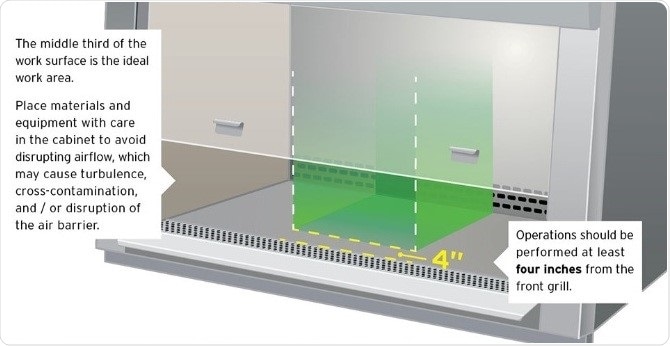
Image credit: NuAire
7. Work from clean to contaminated
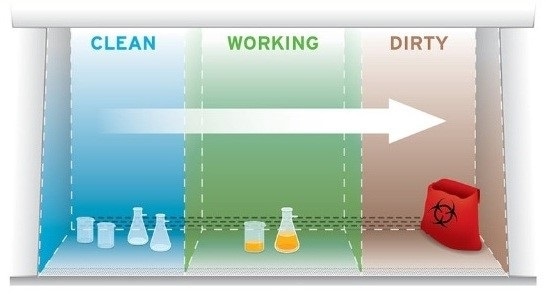
Image credit: NuAire
Active work must flow from the clean area to the contaminated area across the work surface. Both materials and supplies should be positioned in such a way that there is limited movement of "dirty” items over "clean" ones.
In order to prevent airflow imbalance within the work zone, proper balance of materials should be maintained from left to right. Large and bulky items like suction collection flasks, discarded pipette trays, and biohazard bags should be placed to one side of the cabinet’s interior.
It is important that all materials are placed as far back in the cabinet as possible, away from the front grille of the cabinet and toward the rear edge of the work surface. In the same way, aerosol generating equipment (for example, tabletop centrifuges, vortex mixers) should be located toward the rear of the cabinet in order to benefit from the air split.
8. Working with tubes
Open tubes or bottles should never be held in an upright position. Similarly, tube or bottle caps should not be placed on the toweling, and items should be covered or recapped as soon as possible.
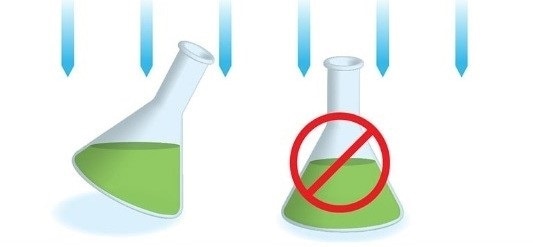
Image credit: NuAire
9. Working with petri dishes
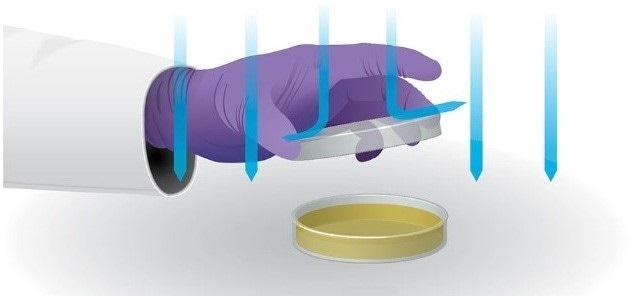
Image credit: NuAire
When working with tissue culture plates and petri dishes, the lid should be held above the open sterile surface in order to reduce direct impaction of air downflow.
10. Working with aspirator bottles or suction flasks
Suction flasks or aspirator bottles should be coupled to an in-line HEPA (or equivalent) filter, and an overflow collection flask containing suitable disinfectant. This combination not only offers protection to the vacuum pump or vacuum system in the facility, but also to the staff who services the equipment.
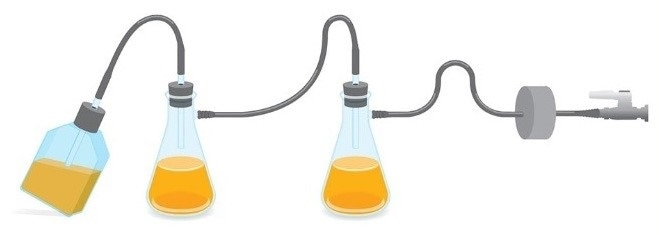
Image credit: NuAire
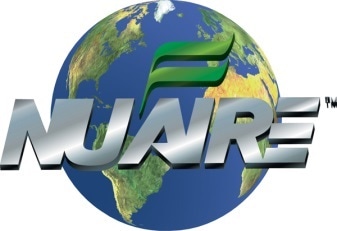
About NuAire
Quality and Service
For more than 40 years, NuAire has been committed to bringing you the highest-quality, most dependable laboratory products on the market.
We are universally recognized as one of the world's leading providers of reliable equipment for the most demanding environments, including Biological Safety Cabinets, CO2 Incubators,Laminar Air Flow workstations, Ultra Low Temperature Freezers, Centrifuges,Animal Transfer Stations, Pharmacy Compounding Isolators, Polypropylene Fume Hoods, Polypropylene Casework, and a variety of complementary products and systems.
You can depend on our products to feature brilliant but practical design, and we pay keen attention to every step of the production process, from fabrication to assembly to thorough testing. As a NuAire customer, you can also rely on us for outstanding value and dependable service - the cornerstones of our reputation as the leading provider of laboratory products internationally.
Committed to Your Success
At NuAire, we create our high-quality products with your success in mind. This means that if you purchase a piece of laboratory equipment from us, we want you to be completely happy while using it.
NuAire will work hand-in-hand with you in order to ensure that your experience using our product meets your standards, and if you encounter any issues or difficulties along the way, we'll help you work through them until you are 100% satisfied. Our philosophy is that we succeed only when you succeed - and we are committed to working hard to ensure you achieve your goals.
Made in America
At NuAire, you can depend on us for being a company that is "Made in America." Our Airflow Products, CO2 Incubators, and Polypropylene Products are manufactured at three locations in Minnesota.
With over 300,000 square feet of manufacturing space, including a state-of-the-art robotic sheet metal facility, NuAire is able to provide employment to 300 Minnesota families and 60 North American sales representatives, and our manufacturing labor is 100% American.
We also purchase our materials from over 500 American vendors, each operating principally in the United States. More than 60% of the raw materials, parts, and supplies for our products originates in the U.S., and an average of 20-30% of the stainless steel flats we use are made from recycled metal.
International Leader
While NuAire is an American company, we also have several international business partnerships, which allow us to better serve you, the global laboratory community. NuAire recently started manufacturing a line of Biological Safety Cabinets in China in order to supply products to the Asian markets via Techcomp, Ltd., a publicly traded Chinese company.
In 2014, NuAire founded an international partnership with Hitachi Koki in order to supply high performance centrifuges to the North American market. NuAire can now provide customers with the sales and service of Hitachi High Speed, Ultra, and Micro Ultracentrifuges.
With several other partnerships with a variety of European and Asian companies, we have sold over 100,000 biological safety cabinets to customers in 150 countries and have equipment located on all 7 continents.
Sponsored Content Policy: News-Medical.net publishes articles and related content that may be derived from sources where we have existing commercial relationships, provided such content adds value to the core editorial ethos of News-Medical.Net which is to educate and inform site visitors interested in medical research, science, medical devices and treatments.